Do you know where Cuckoo Clocks come from? Are you planning a visit to the Black Forest in Germany? Or do you want to make your very own Black Forest cuckoo clock?? Join us as we make our own Germany Cuckoo Clocks in the Black Forest…
As we admire the intricate handcraftsmanship we can hear the ticking, the chimes, the cuckoos. They echo around the quiet room, taking us on a journey through time… from the mid-19th century to the modern day, from Paris and Versailles, London, and the Mediterranean, ending at the home in the Black Forest in Germany.
We’re at the Deutsches Uhrenmuseum, or German Clock Museum, in Furtwangen in the southern region of the Black Forest. And we’re here to try their new do-it-yourself cuckoo clock experience!
Do-it-yourself Cuckoo Clock Making Experience
The new Do-it-yourself Cuckoo Clock Making experience is a really cool concept! Take a ready carved wooden clock face. Use the supplied paints to decorate it however you want. And then fit the clock mechanism. And voila! Your very own handmade cuckoo clock straight from the Black Forest! All by following a simple video guide available in multiple languages at your own pace (and maybe with a little help too!).
Our Experience
When we planned to come to Germany and to the Black Forest, the first thing that came to mind was for us to get a cuckoo clock as a souvenir. So, when we found we can actually make our own, we thought that would be incredible! To be able to make it ourselves, in Germany, and bring home it will be something we’ll cherish forever!
We arrive at the museum and we have no idea how easy or how difficult it will be, but we’re very excited by it! Sneha is definitely the artistic one between us, so she goes straight for the experience while Paul takes a look around…
I (Sneha) am taken to a table where there’s a wooden carving of a clock, a set of paints, and a clock mechanism. I’m relieved that I don’t have to carve the wood myself as I don’t think that would have come out well!
Designing our Cuckoo Clocks
My mind starts thinking about how I can decorate it, and how I can make it look different from those I can buy in the shops. Eva (who works for the museum) says I can take as much time as I need. So I join her, Paul, and Linda (also from the museum) and we take a walk around looking for some inspiration.
All of the cuckoo clocks look amazing and so different, but one thing that strikes me is that they all have their own story to tell. A couple sitting enjoying a beer, a group of folks singing and dancing. I want my clock to tell a story too! So I start thinking how I can creatively make the clock speak with the colours of the paint…
It’s mid-September when we visit and as we drove through the Black Forest on the way to the museum, I could see the early onset of Autumn with the leaves on the trees starting to change into beautiful colours. So, there it is… seasonal changes! I can use the colours to tell the story of the seasons… shades of green from Spring to Summer, to yellow and orange through Autumn and into Winter.
I follow the video with the first step being painting the wooden clock. And it’s so much fun seeing the clock come to life in colour!
While it’s drying, we have a tour of the museum (read this experience below!), and I watch the next part of the video to see how to finish the clock.
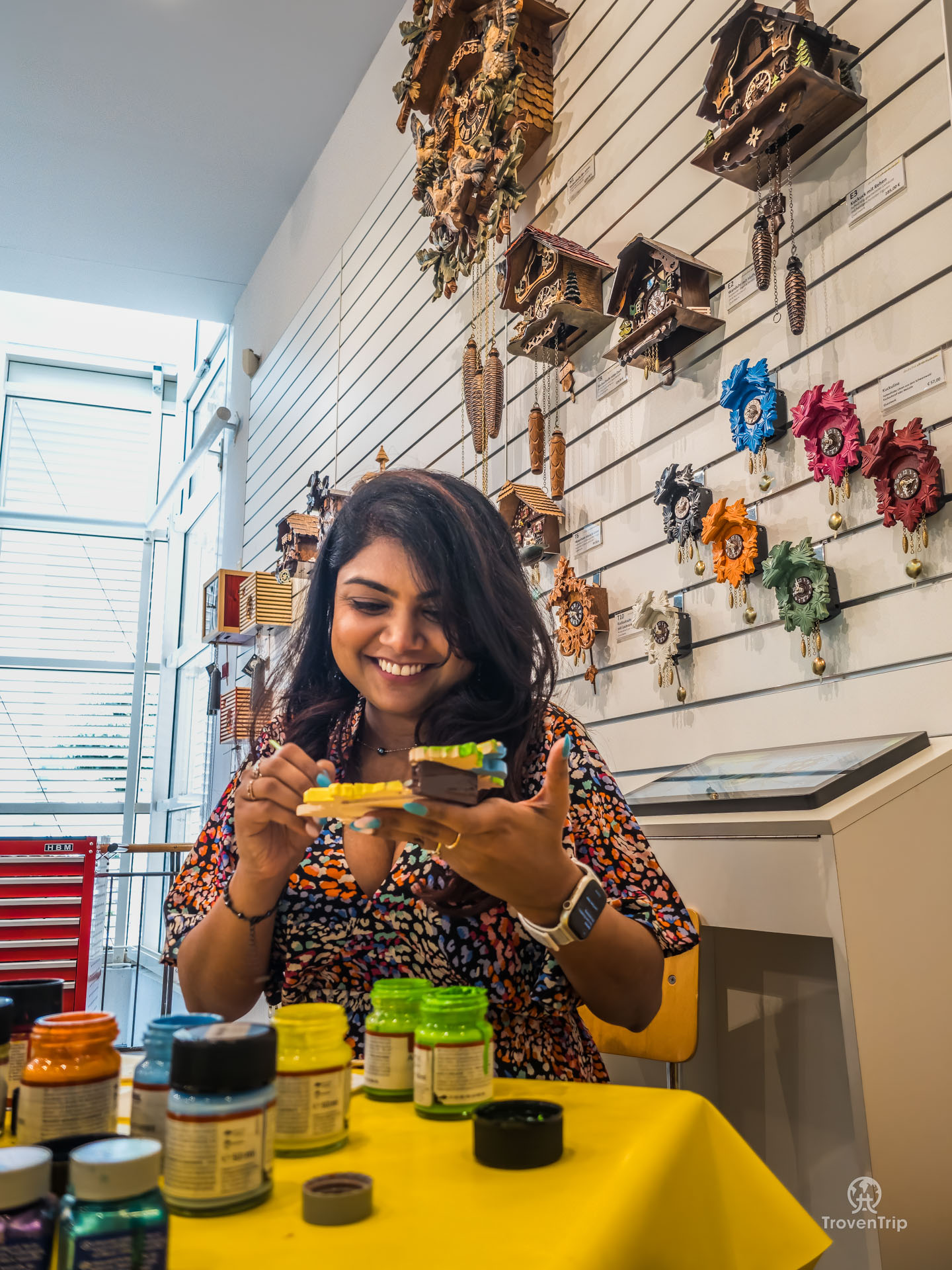
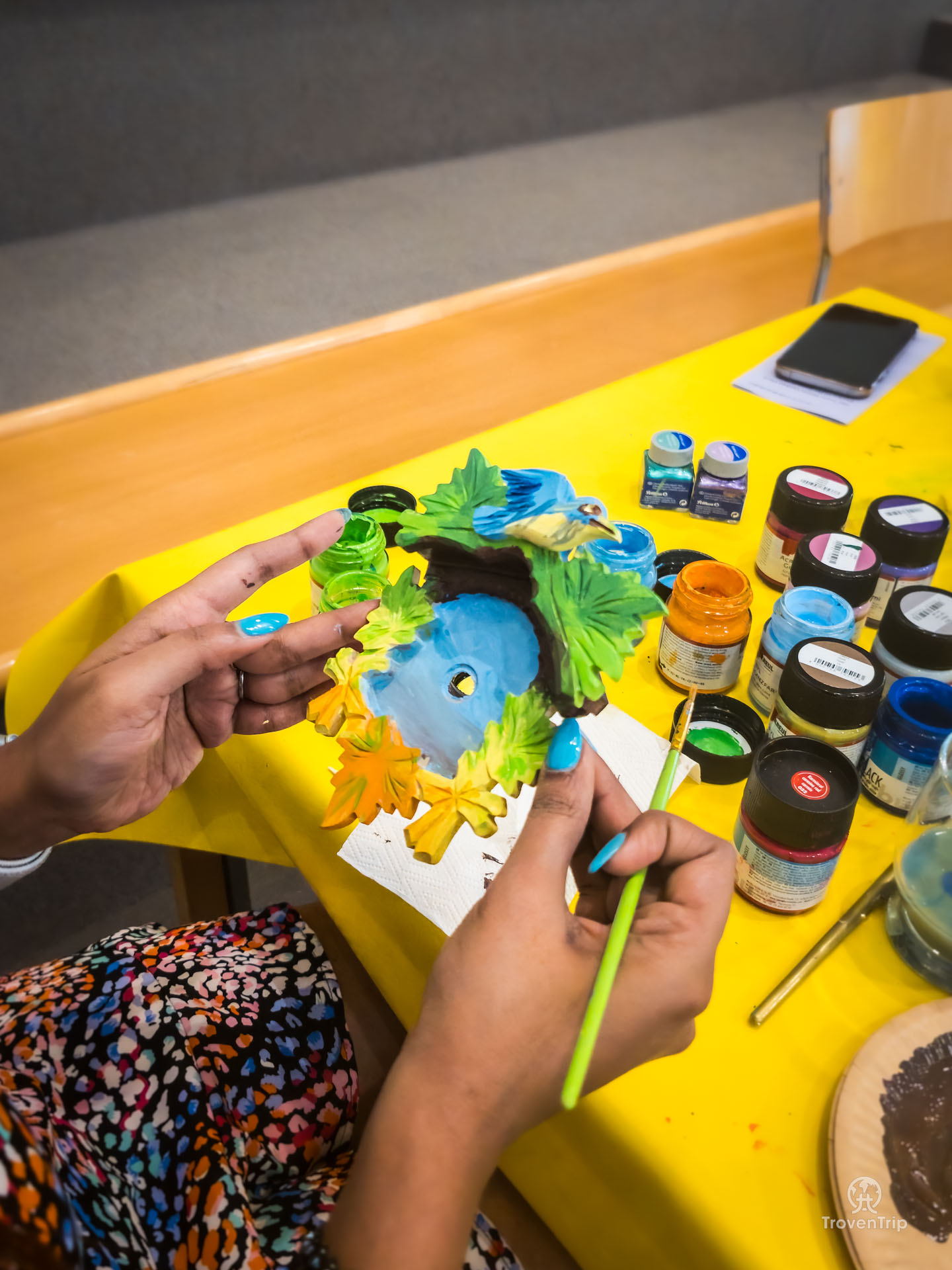


Finishing our Cuckoo Clocks
Attaching the clock mechanism isn’t quite as easy as I thought, but the good part is you don’t need to glue anything so even if you do it wrong at first it’s easy to fix. And Eva see’s me struggling with it, so she helps and does it with ease!
And it’s done! I’ve made my own cuckoo clock! I turn the tiny hands to hit the hour and… cuckoo… cuckoo… cuckoo… it works!
While I’m taking my time making a nicely decorated clock, the slightly less artistic Paul has a go too, but goes for a simpler design… a clock in the TrovenTrip brand blue!
The experience is really fun and absolutely worth the time and money… we get to take our own cuckoo clocks home! And the next day we go to the House of 1,000 Clocks in Triberg and the same clocks, with simpler designs, are almost double the price of the do-it-yourself experience!


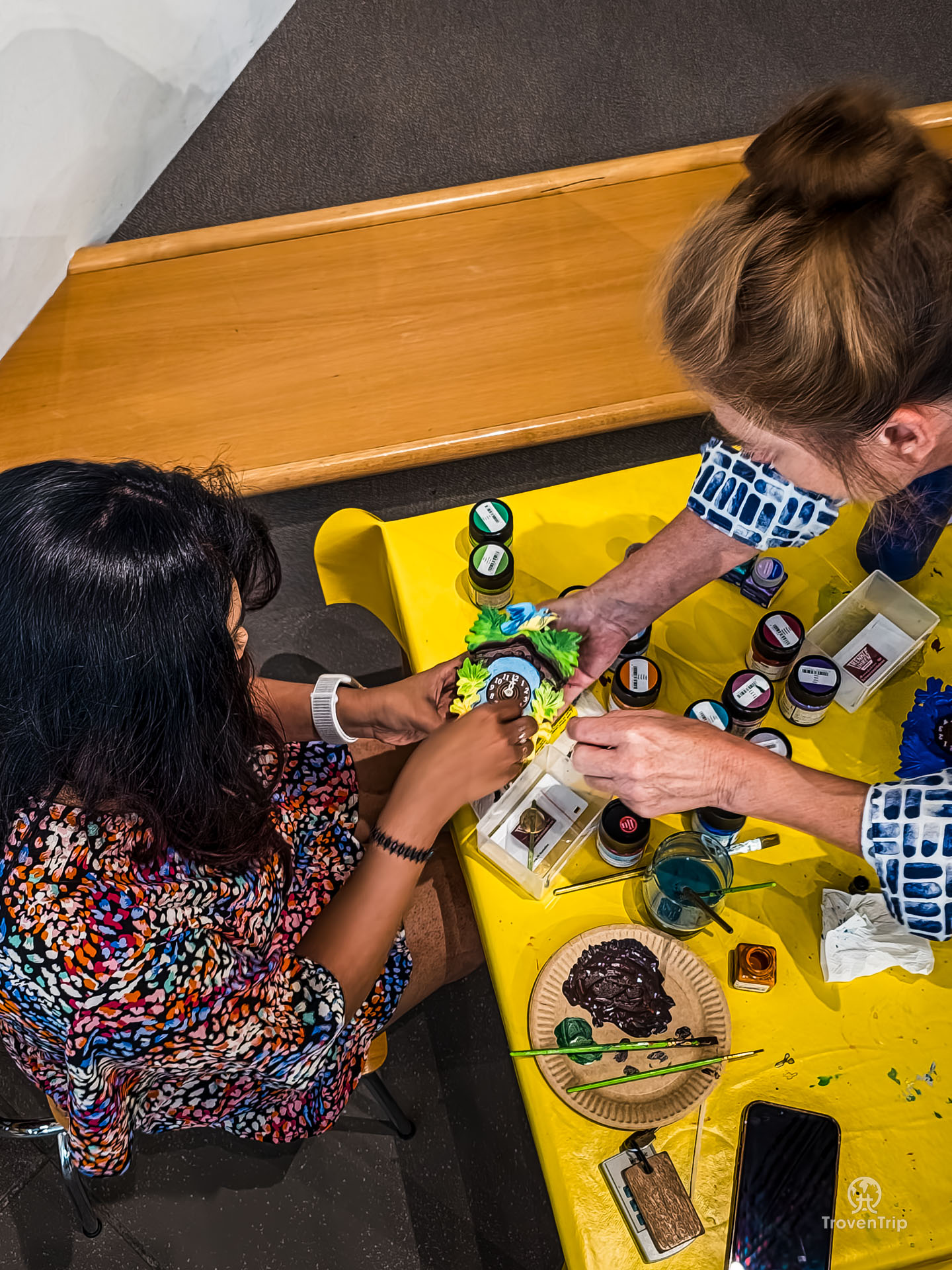
TrovenTrippers Tip…
If you want to take a cuckoo clock home as a souvenir from the Black Forest then the do-it-yourself experience is the perfect way! It costs €40 which includes all of the materials needed, and a tour of the museum to learn the history of the clocks and to get inspiration to make your own. And, the same clocks sell for €70+ in nearby shops so it’s great value!
Allow yourself around 2.5 hours for the experience, so you can take your time with the painting and allow lots of time for the clock to dry as you explore the rest of the museum.
Tour at the German Clock Museum
As well as the fun and interactive offering of the do-it-yourself experience, the museum has one of the best collections of clocks in the world.
Founded in 1852 to preserve the clockmaking heritage of the Black Forest, it has expanded and grown to the huge collection it is today. From antique clocks, alarm clocks, mechanical and electrical, pocket watches and even music boxes, every type of clock you can imagine is here. Oh, and of course, who could forget the world-famous cuckoo clocks!
We’re shown around the museum on our tour by the very knowledgeable and friendly Eva and Linda, who tell us all about the clocks we see, how they’re made, and the history and funny stories behind them!
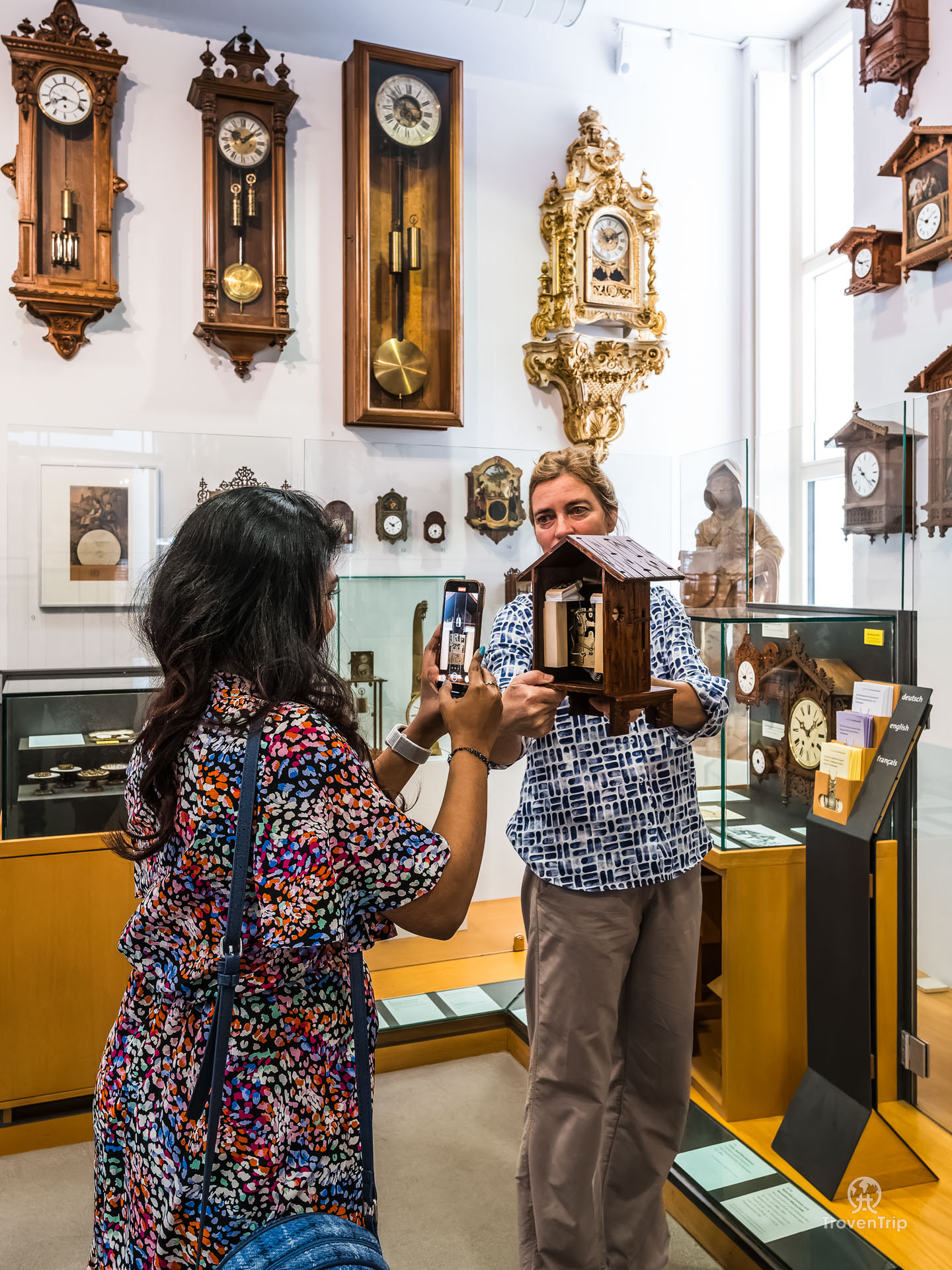



Cuckoo Clocks at the German Clock Museum
We start at the only place there is to start, with some cuckoo clocks!


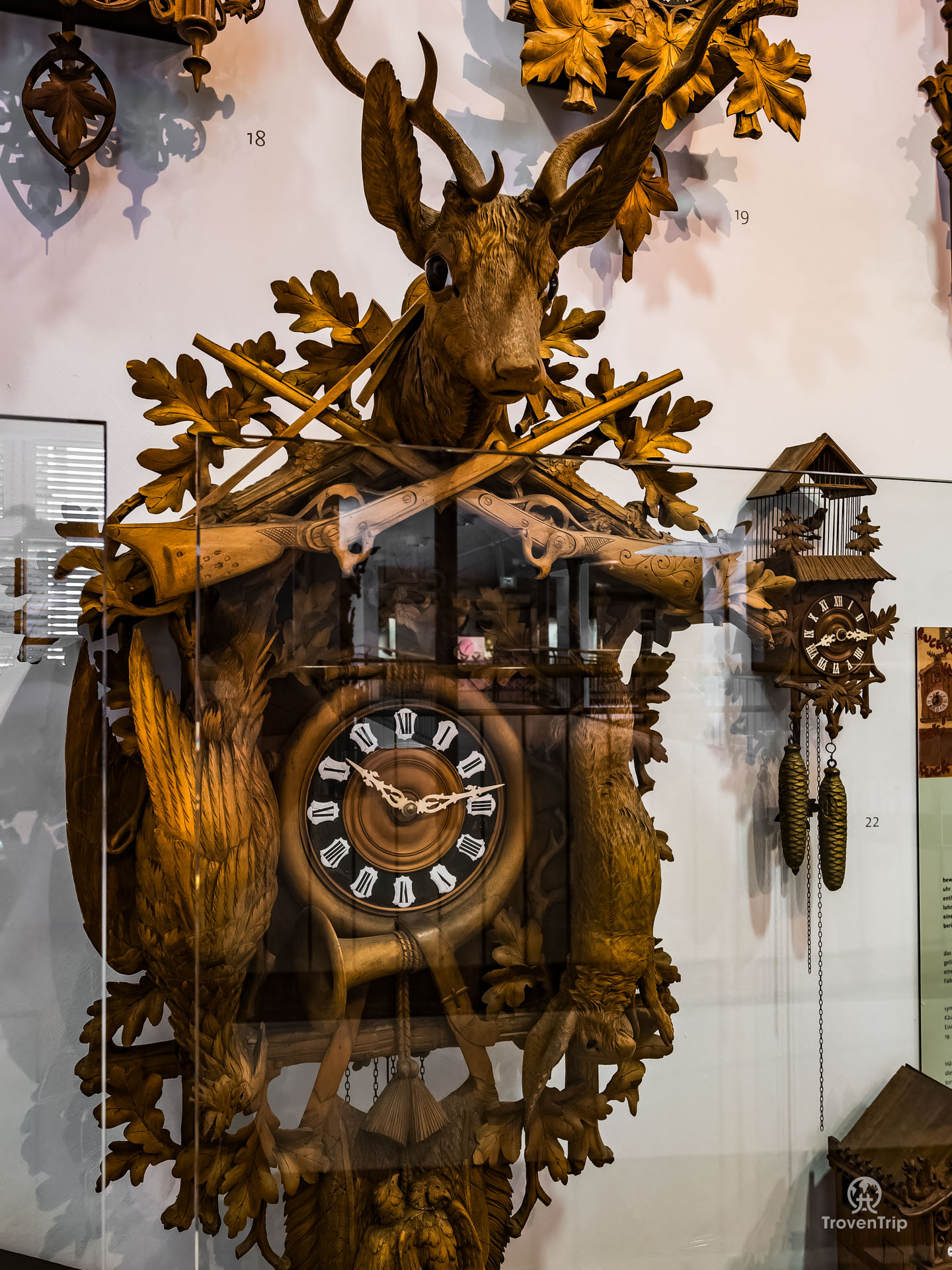
Black Forest Clock of the Year 2023
In the entrance of the museum are 12 cuckoo clocks, all contenders to be voted ‘Black Forest Clock of the Year 2023’. Eva tells us about them, showing the different decorations and movements of each.
The detail is very impressive, all decorated beautifully with their own theme. Our favourites are the ‘Oktoberfest Beer Garden’ clock… where two drinkers dressed in lederhosen raise their glasses to Cheers each other. ‘Rudi’s Schnitzstube’… with carved animals and a turning mill wheel. And another with a working water wheel and people dancing to a band playing!
Votes are open until November 15th 2023… cast yours now on the Black Forest Tourism website and you can win a cuckoo clock!
As we wander around the rest of the museum there are lots more cuckoo clocks to admire. We see the Station House Clock, Bahnhäusle, which was the birth for the prototype of today’s cuckoo clocks.
And 2 striking clocks which catch our eye are large hand carved ones, one hunting style one with shotguns crossing a stag’s head and a rabbit and bird hanging. And one with a large bird on top and deer sat amongst leaves. Both are behind glass cabinets so it’s tough to get photos though!
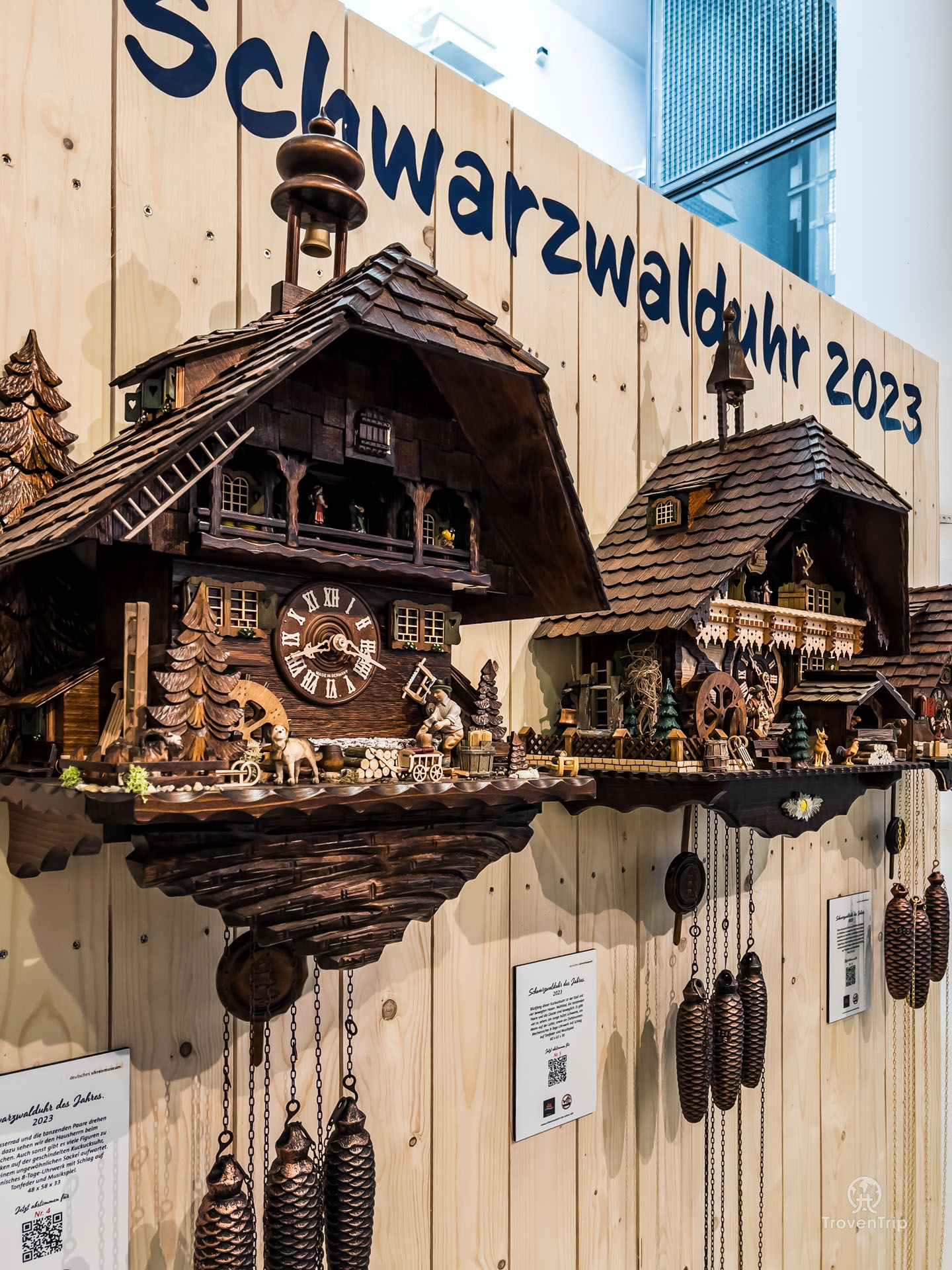




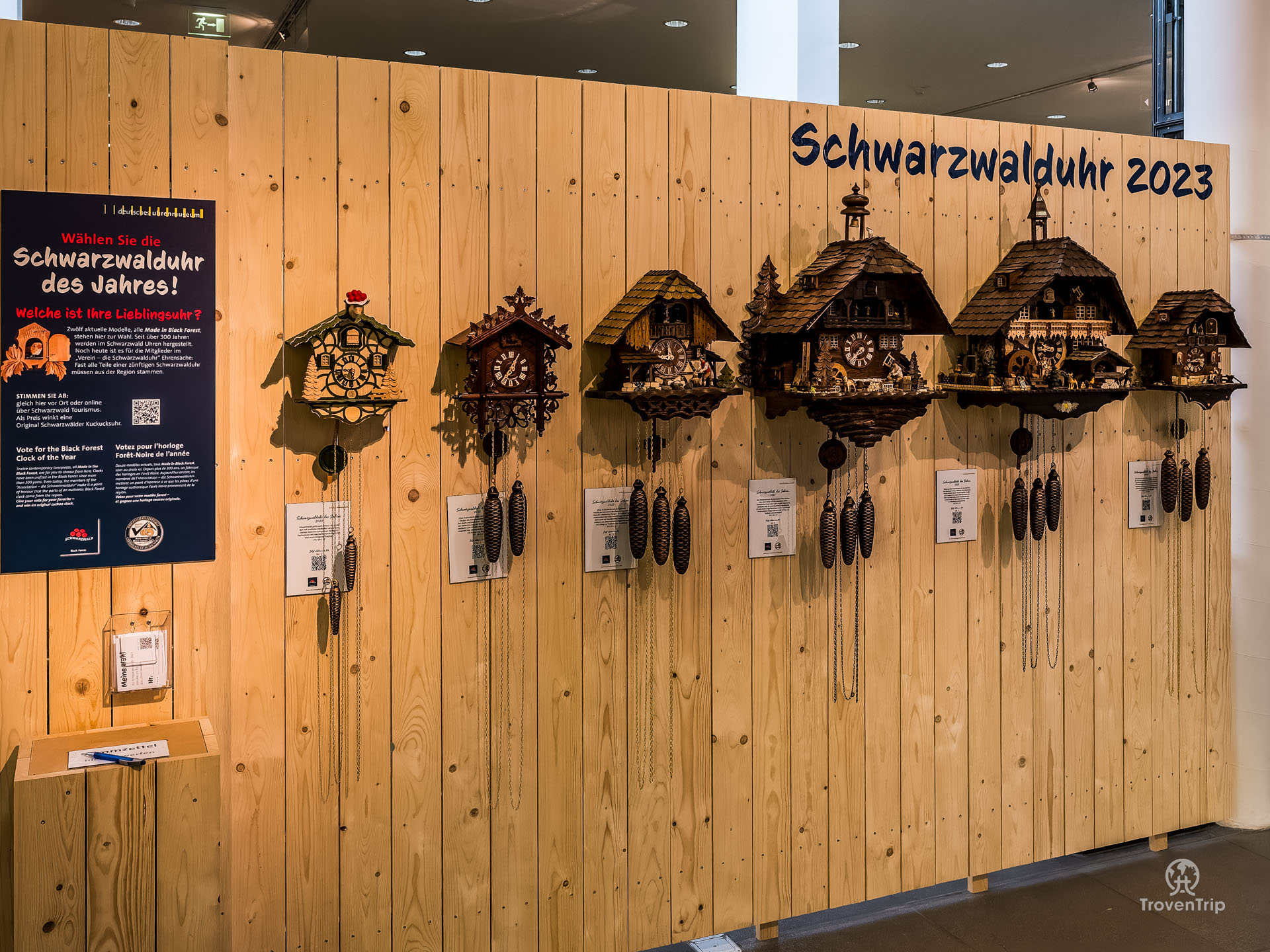
Modern Cuckoo Clocks
Cuckoo Clocks aren’t just rustic wooden houses from the 19th century. There are also a lot of modern and contemporary designs, some minimalist and some full of colour. There are even clocks in the shapes of cats and dogs!
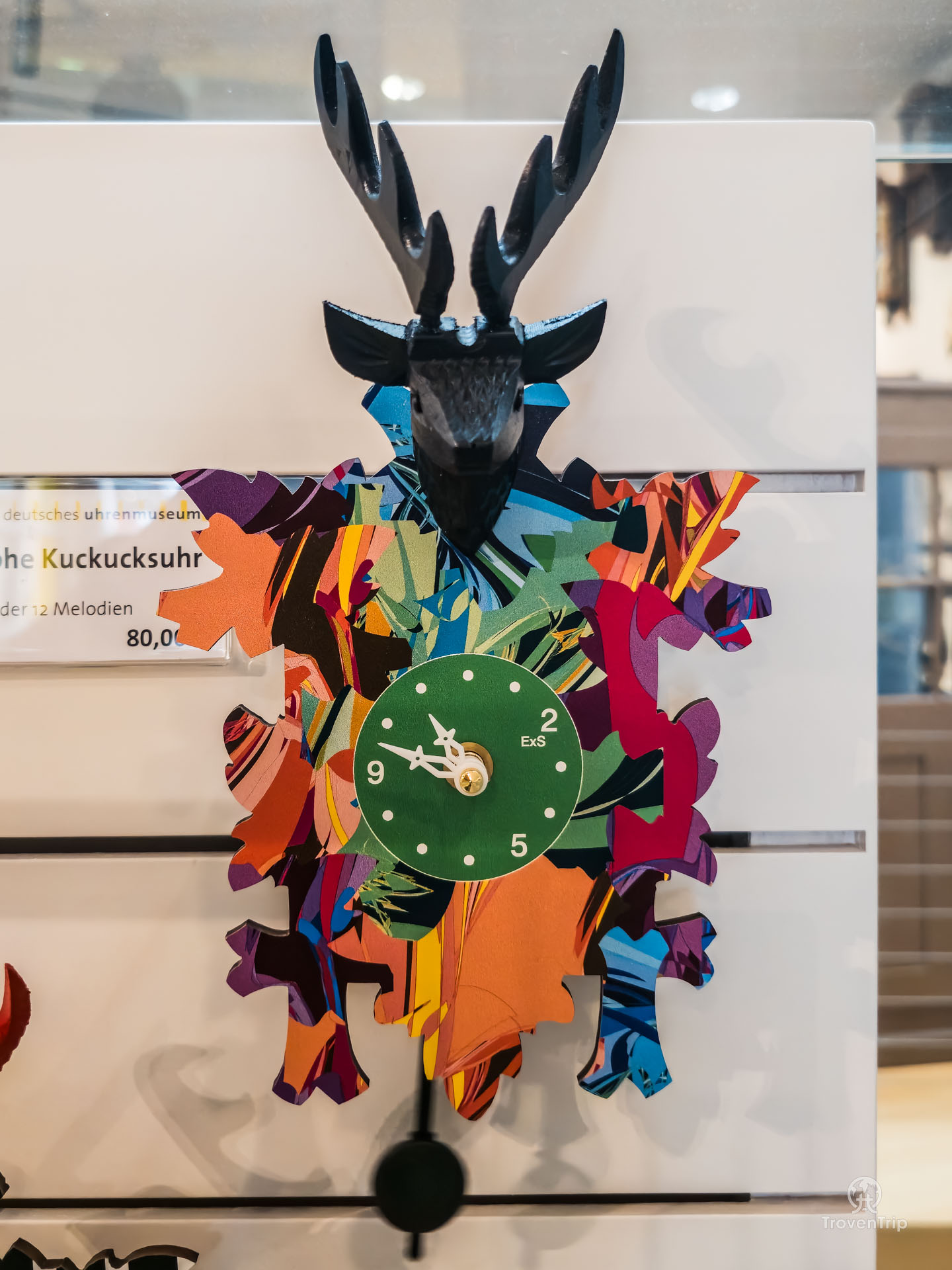


The Oldest Known Black Forest Clock & Clocks from Around the World
During the rest of our tour we see the oldest clock known from the Black Forest, and many clocks from all around the world.
The clocks from Paris and Versailles are a lot fancier than those from the Black Forest… lots of gold and statues. Whereas the clocks from the UK are a lot simpler, with ‘white dial clocks’ being the most popular and having lead painted faces (which didn’t end too well for those painting them!).
Another eye-catching and different clock Eva points out to us is one from the Siege of Paris in 1870, where the clock has been mounted into a bomb shell! Very different and quite cool!
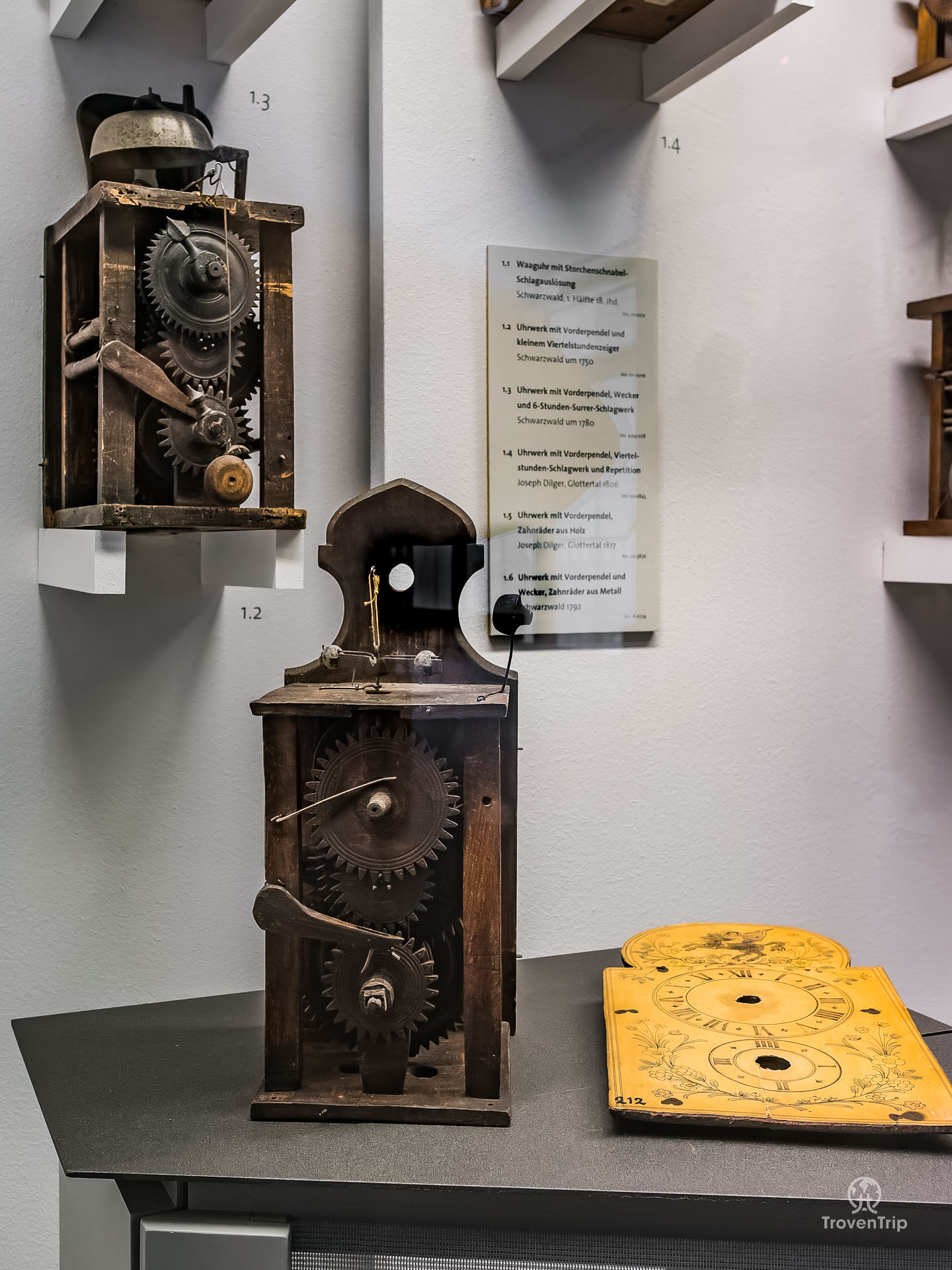
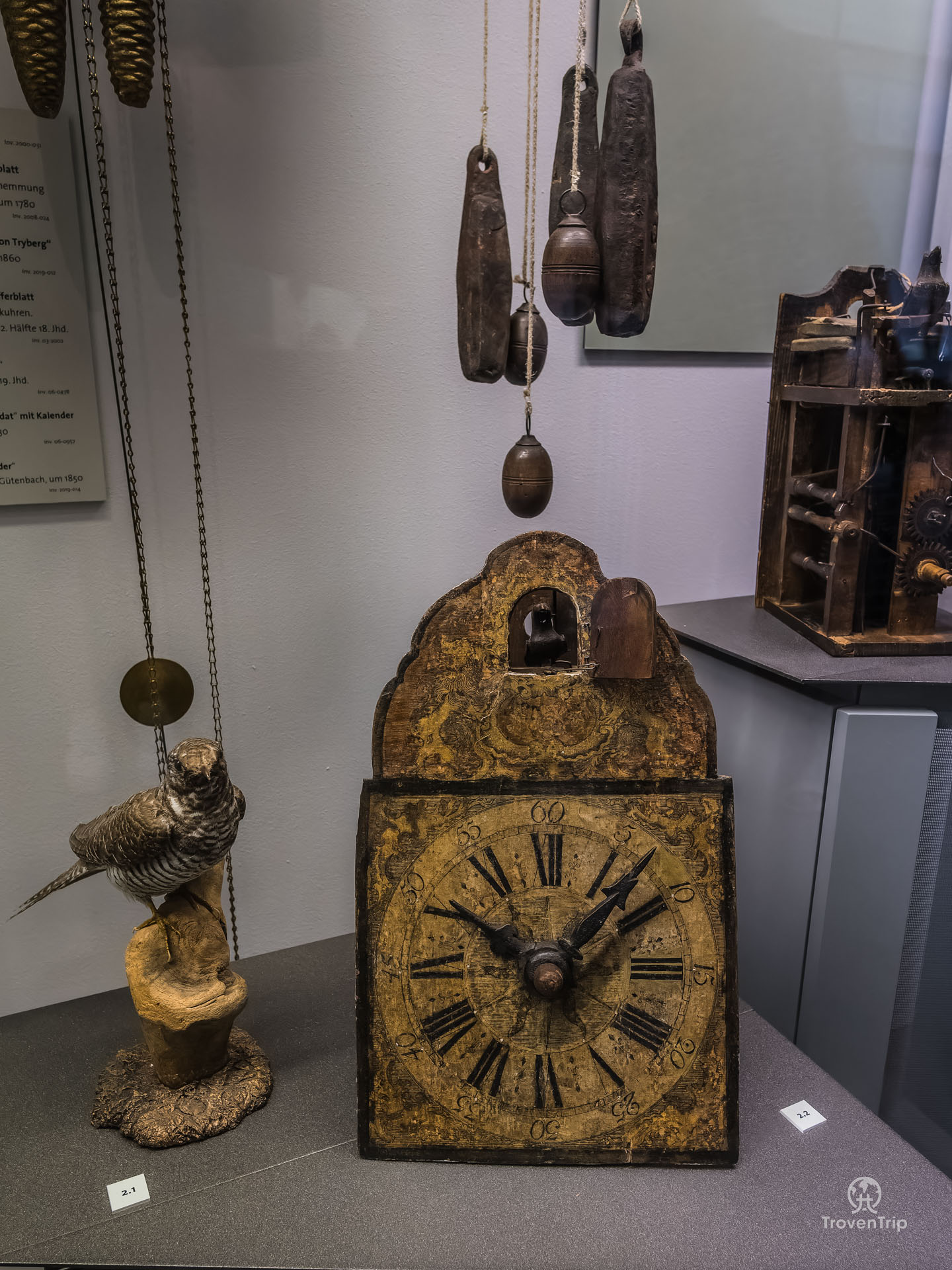
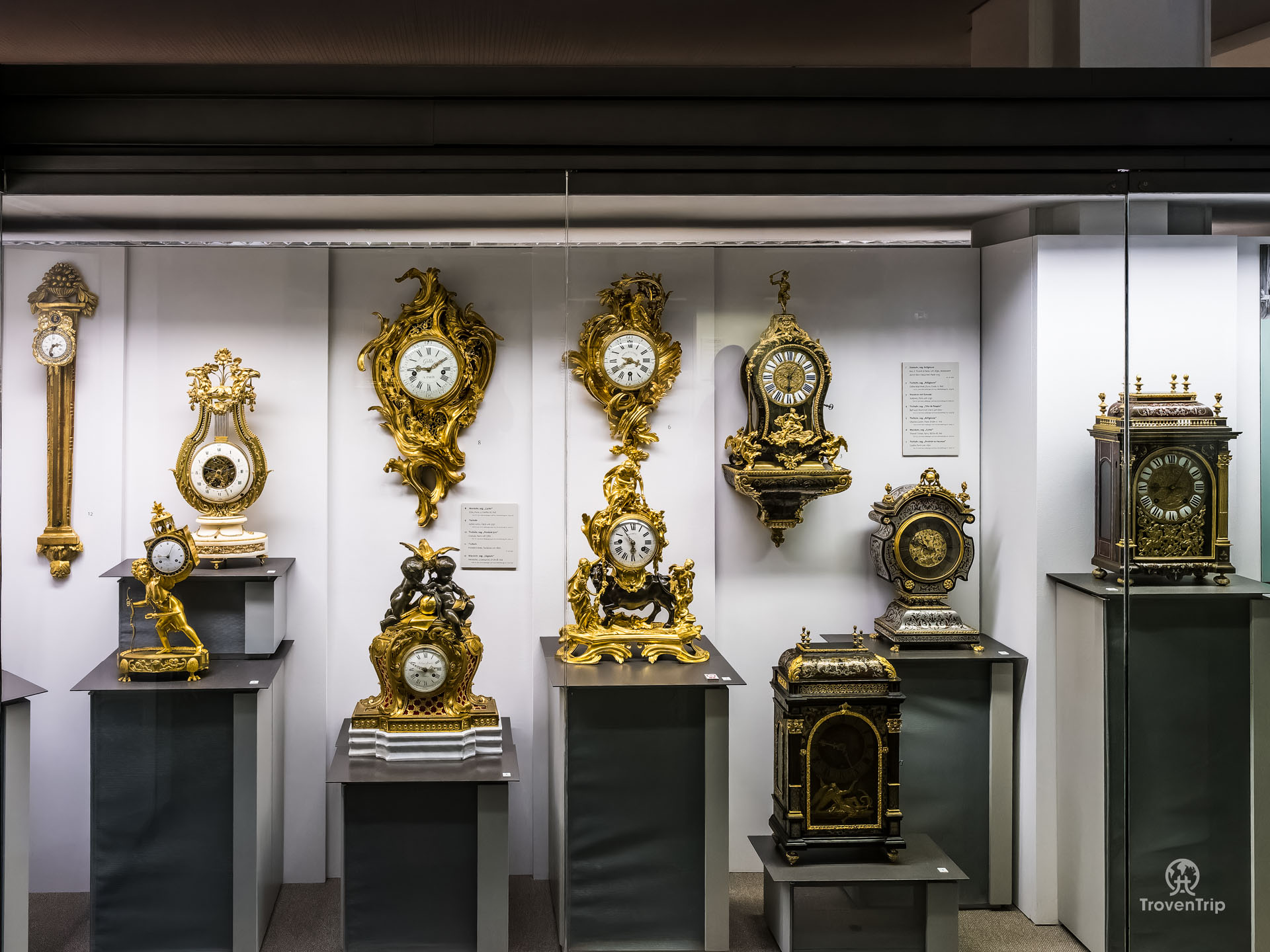
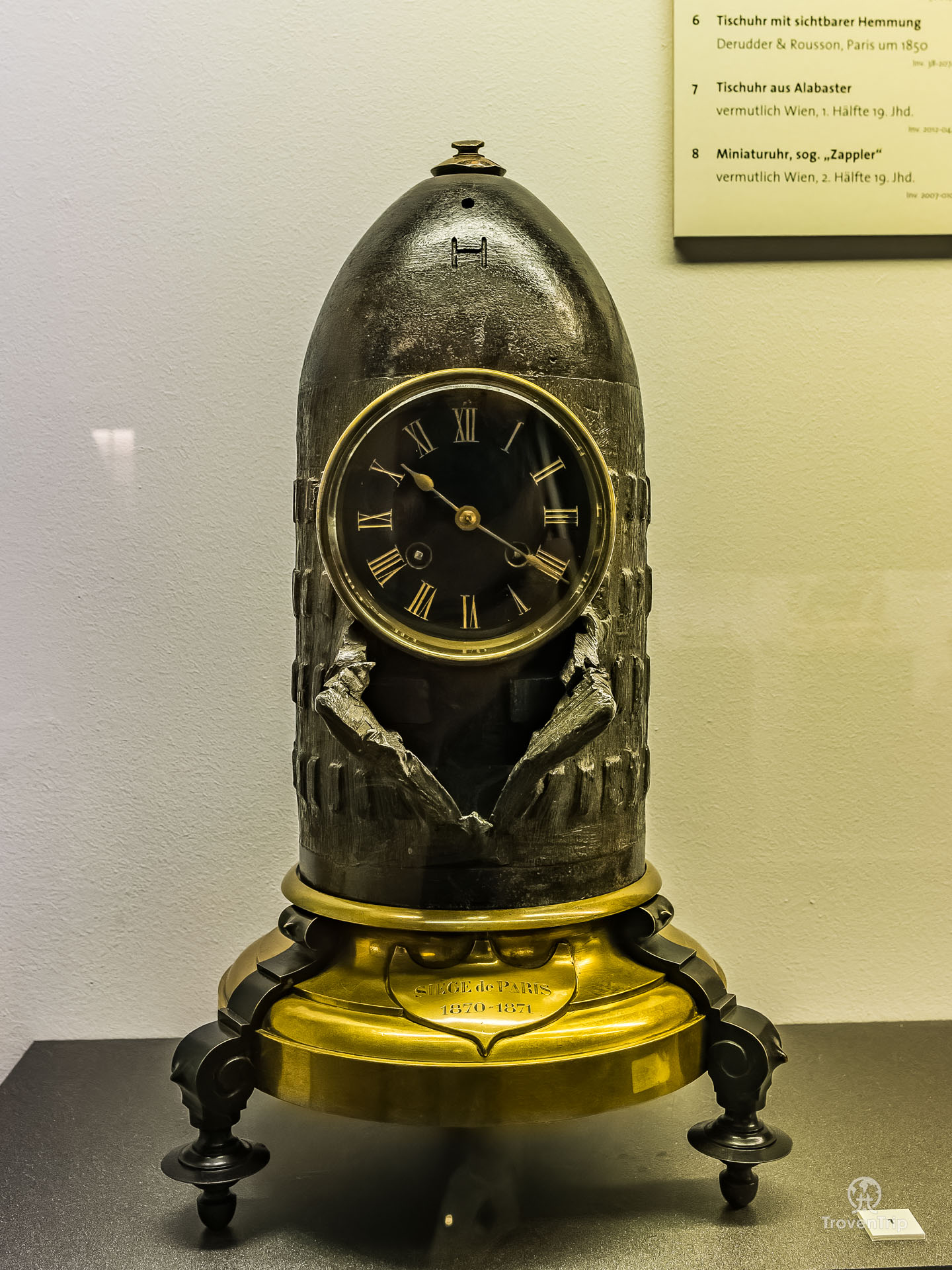
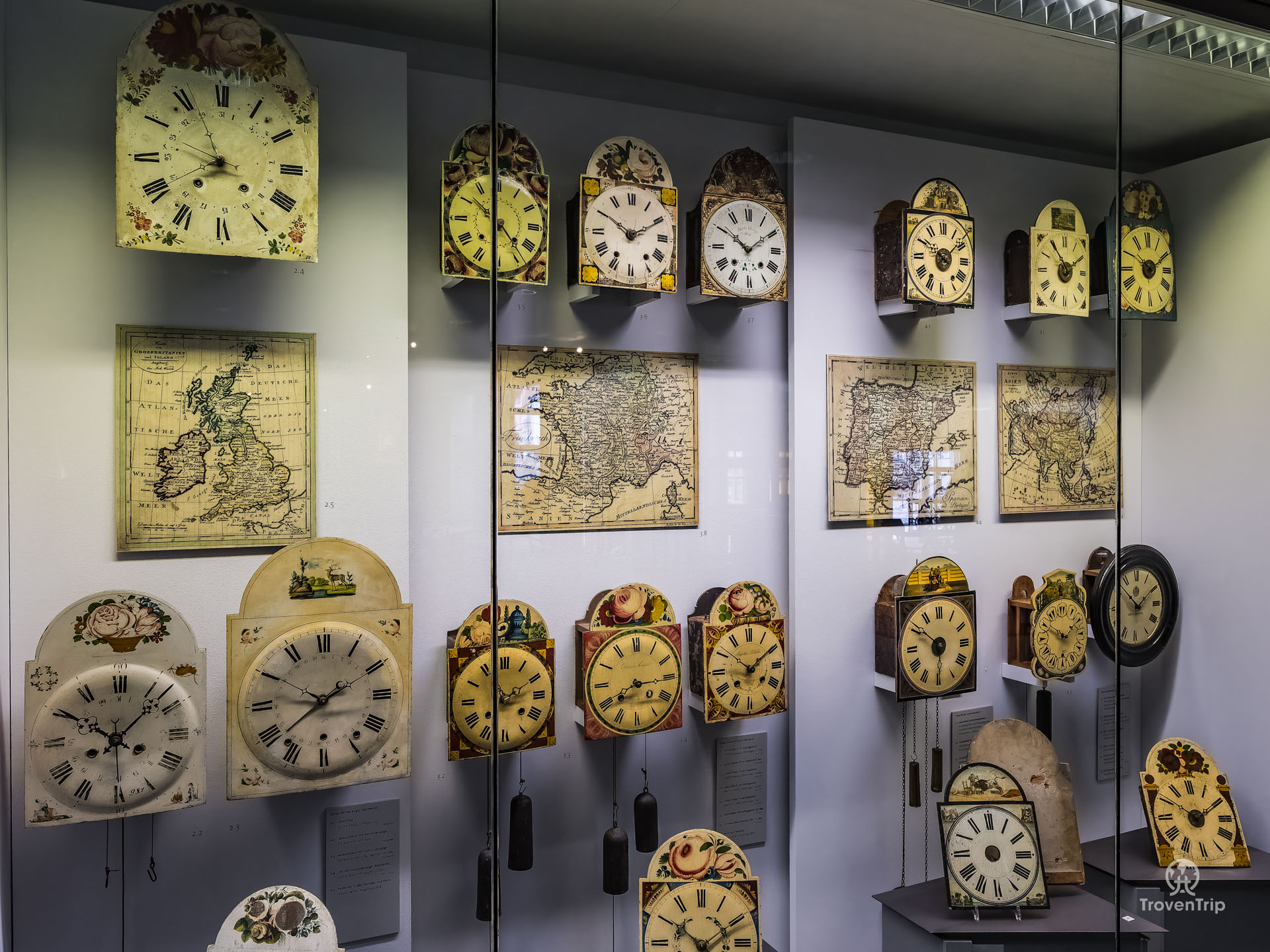
Copernican Planetarium & Astronomical World Clock by August Noll
One of Linda’s favourites and definitely one of the more unusual is the Copernican Planetarium. Dating back to 1774, the clock has all of the known planets from the time moving around a large glass ‘solar system’, a very impressive and interesting piece!
One of the last clocks we see on the tour is also one of the largest. The Astronomical World Clock by August Noll is 3 metres high and over 3 metres wide, with 16 dials showing the time in different cities around the world.
There is also a small globe on the front, and many figures which move, dance, ring bells, and even a grim reaper next to angel! The level of detail is again amazing, and although maybe not the most practical to have at home due to its size, it would certainly be a great centre-piece for a travel blogger to have!



Alarm Clocks & Wrist Watches
Leaving the unusual cocks behind, there is also a large selection of alarm clocks and wrist watches on show in the museum. Perhaps not as interesting or as beautiful as a lot of the other clocks we’ve seen so far, but who can live without an alarm clock or a watch to tell the time? (and lots of other features available with today’s smart watches).


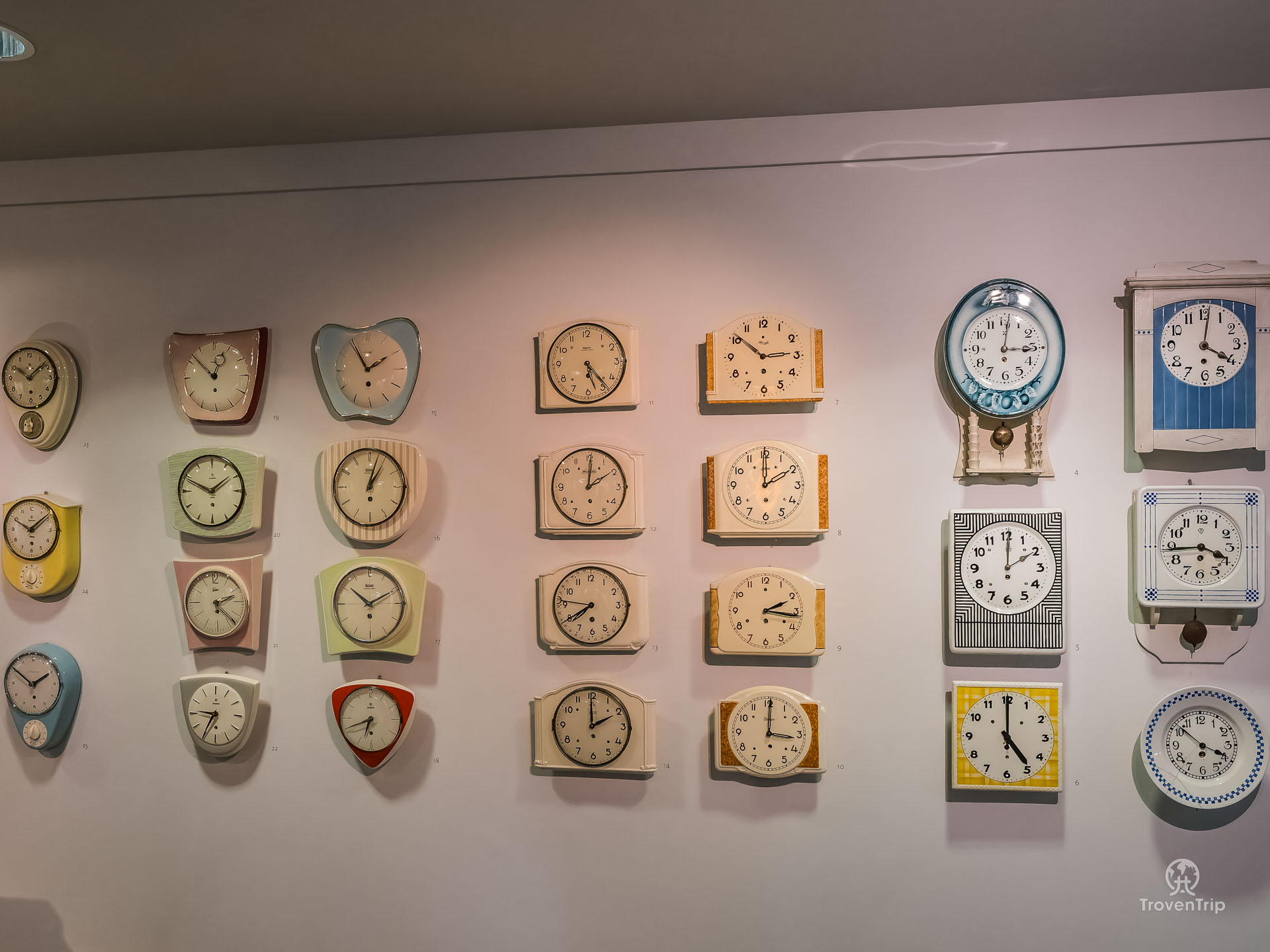
Music Boxes
The last room we go to before we ‘clock out’ (sorry, couldn’t resist the pun!) is another of Linda’s favourite areas.
Here we see some music boxes… some as clocks, some as purely music boxes. And as a special treat to end our great day, Eva shows us how some of them work, before letting us loose on them and allowing us to play some!
Sneha tries a large one first, pressing a button which starts the musical tunes. Paul has to put in a bit more effort, hand cranking a box and trying (and failing!) to control the music with the speed of the handle!




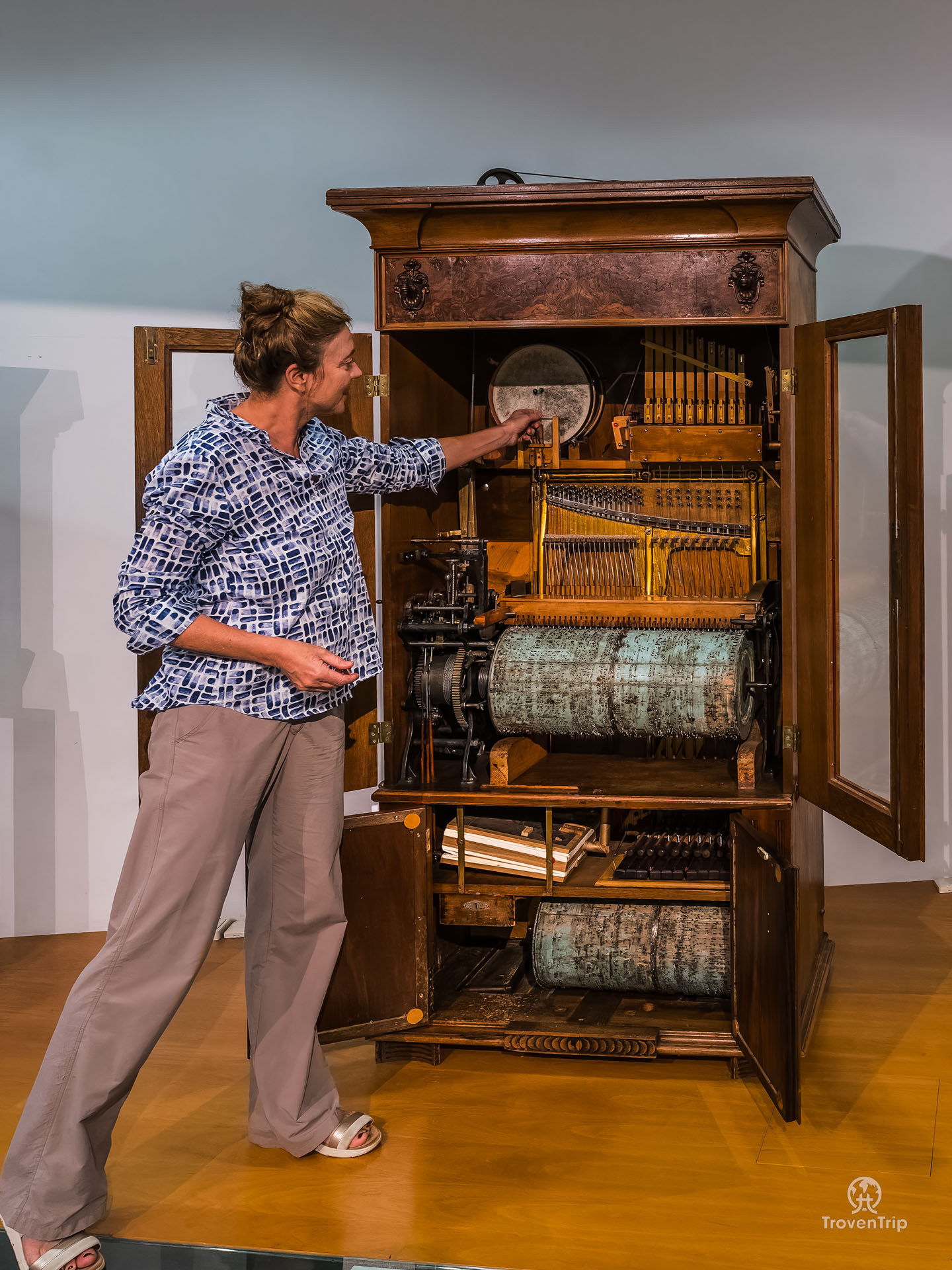


TrovenTrippers Tip…
Don't miss the music boxes and grandfather clocks downstairs! The cuckoo clocks in the museum are the star attraction, so you'd be forgiven for spending your whole time admiring them. But head downstairs to see some of these unique pieces as they are just as interesting and beautiful!
TrovenTrippers Moments...
We had a great afternoon visiting the Deutches Uhrenmuseum! The Do-it-yourself experience was great fun, being able to make our own clocks and take them home as souvenirs is something we'll always cherish!
And the museum is full of interesting and unusual clocks to see on the tour. The level of detail on the clocks is really impressive, and the information provided by Eva and Linda really added to our visit.
On our way out we ask Eva how long she’s worked here for as she seems to know everything about everything clock! “Maybe 10 years” she says, “but I’m still discovering new clocks and it never gets boring here!”
If you want to continue on our cuckoo clock journey then head to Triberg, and read our blog... The 8 Best Things to do in Triberg!
Where is the Deutches Uhrenmuseum?
The German Clock Museum is in Furtwangen, Robert-Gerwig-Platz 1 · 78120 Furtwangen.
How do I book the Do-it-yourself Cuckoo Clock Experience?
You can contact the museum at email@deutsches-uhrenmuseum.de or call (+49) 7723 920-2800.
How much does the Do-it-yourself Cuckoo Clock Experience cost?
€40, which is a bargain! This includes a tour of the museum, all of the materials for the clock, and you get to take the clock home! The same type of clocks are for sale in the museum for €57, and we saw them in other shops in Triberg for €75! So €40 for your own plus the tour is great value.
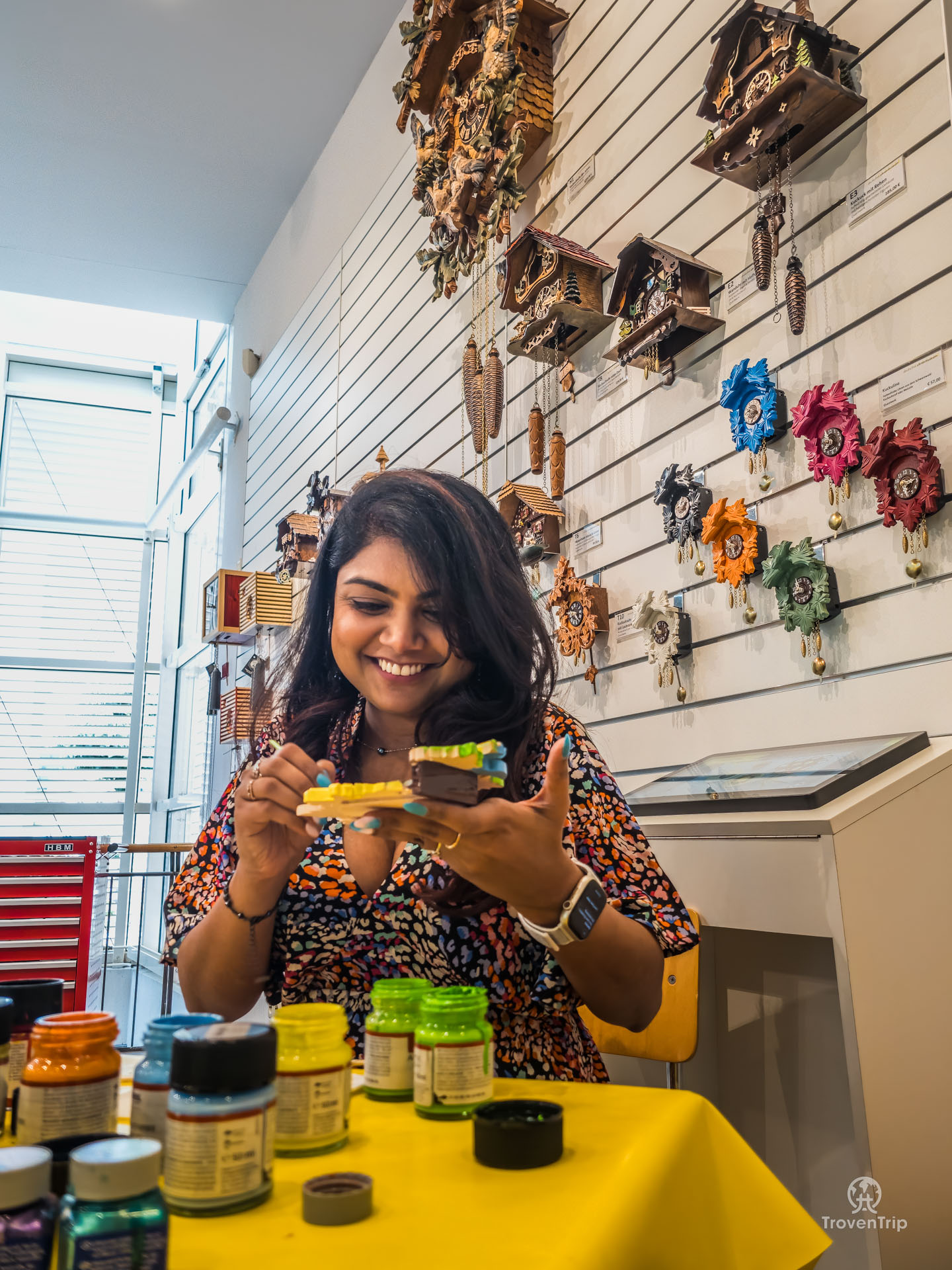

Be the first to leave a comment
Relateable posts
-
blog
-
Germany
Sep 26, 2023The 6 Best Things to do in Munich
Are you looking for the best things to do in Munich? Do you know what…
-
blog
-
Germany
Sep 24, 2023Oktoberfest… the World’s Biggest Folk & Beer Festival
Did you know Oktoberfest is the World’s biggest folk & beer festival? Are you interested…